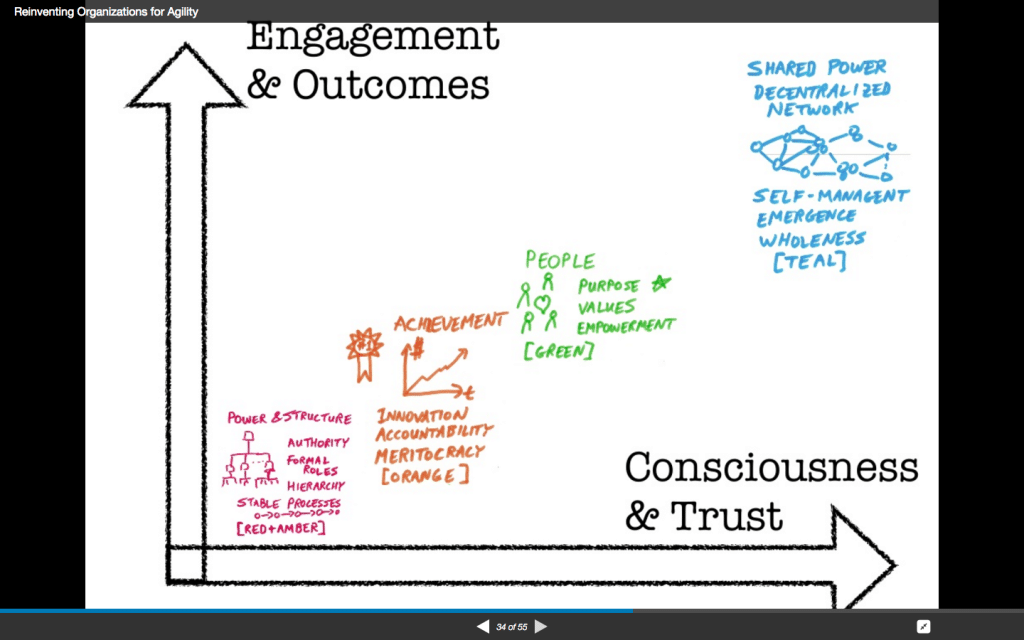

August 5, 2021
Hiring ,Values
DEI is a contentious, complex subject. But sometimes problems are complex while solutions can be simple (but not necessarily easy).
There are many books, programs, and teachers on the subject of DEI, but in my work I continually hear stories about how it divides people rather than brings them together.
I always remember my experiences at Zappos, and how we made it a very diverse and inclusive company. Even my team of just 20 people was a diverse group of men/women, black/white and various ethnicities — even though we never brought them on for those reasons!
My belief, formed from a career from a career helping others achieve this, is that companies that have very strong values produce a diverse workforce. When the hiring process looks for these qualities, the perfect candidates will naturally span all races/genders. But think about what happens without hiring by values. What do people go by after experience?
Personal preferences and biases.
There used to be a maxim in Silicon Valley to hire people that you could “get a beer with.” But that means you only hire people you like or are like you. And from a business perspective, we need a diversity of talent that can challenge us. So the people we need may not be the people we necessarily like.
This is not to gloss over all the pain and injustices that the employees of a company may go through. I’ve found that having a crowdsourced conversation like Open Space helps to “empty the closet” and put everything on the table. And if tensions are really bad, the Obstacle Breakthrough process in my book, The Culture Blueprint, is a tested framework to work through it.
And once that is done, the company (through its leadership), must determine its core values that are unique, so that they attract the right people, and detract the wrong ones. If a company’s values can easily be used at another company, then the leadership has not tapped into the true uniqueness of its own culture.
My book The Culture Blueprint has a process that I believe can work for any company that approaches it seriously. You can download the entire audiobook here, at no charge. And if you want guidance through the process, I’m here to help.
April 29, 2021
Great cultures ,Values
I’ve heard leaders say they want loyalty from their employees. The question is – Loyalty to what?
They say loyalty to the company but they’re really saying loyalty to the leaders and their decisions.
And when it’s loyalty to people there are only two solid use cases I see for that:
In a strong culture based company, the loyalty is to the values.
And in those companies, employees may even challenge the leaders, based on those values.
Do you want loyalty? Or do you want a great company with people smarter than you who challenge your decisions in service to the customer?
July 20, 2018
Tools ,Values ,Vision

You’ve probably heard this one…
The story about the company that was so excited to bring in the new intranet software so they could finally get everyone on the same page, share knowledge, stay up to date and unify the company, and then… no one used it.
Something happened when we started using the word “Human Capital.” It used to be called “Personnel” – as in real people. But companies got so big that people became numbers. We then start to track them, count them and trade them like they’re any other resource. Just one of several cogs in the machine.
People are emotional, irrational, passionate and full of surprises.
Some will read that and be terrified by that statement.
Others will know that this is the source of innovation, fun and ingenuity that make work exciting and that enable us to solve the world’s biggest problems.
Now that more and more companies understand it’s all about the culture, along come all the people who think software can run the show. Graphs, numbers, input/output, dashboards….
“Ahh, I finally have the feeling that I’m in control of the people situation!”
Guess again.
To be fair, some visual tracking can be very helpful. Especially with simple elegant systems like NPS. But anything more than that comes with a few issues:
1. Survey fatigue
2. Nothing actually happening with the results of said surveys
3. The feeling that people are getting dehumanized
I saw a meme on Facebook that read, “Do you ever notice your successful friends are never posting inspirational quotes?”
In that spirit, have you ever noticed that the really successful cultures aren’t using complex systems to track how happy their people are? When you’re clear on vision and values, and get the right people on board, people can create their own happiness.
Let’s get back to the basics.
In the spirit of the Mr. Rogers documentary that just came out:
“Life is simple and deep.
But we make it complex and shallow.”
-Fred Rogers
March 20, 2018
Culture of Chaos ,Values

When I’m with a group of leaders and managers, there’s often one from a family business.
They are the ones who throw me a curveball. Their culture questions are very different from the rest of the group. The conversation ends pretty quickly once I give them the answer they are not expecting. I say:
It gets a ton of laughs but I’m serious.
The mafia plays by different rules, or perhaps different values. While corporations tend to be based in performance, results, and service. Family business usually means the values are loyalty and trust, before anything else.
So while that leader in the company (usually a son, brother or cousin) is trying to shift the culture, they have to play the game. They want to do things differently but what they really have to do is build up so much trust and loyalty by staying in-line.
In no other circumstance do I say this, but I say – Be a Yes Man, or a Yes Woman. Do it to the point that they get sick of it. Then they’ll either build up a ton of credit to use later, or the leaders will simply hand over more responsibility.
And the next question is – Do you want to play that game?
Because you always have a choice. You can leave and find a place that’s more in line with your values. Or if you stay, play the game and help improve it by working from within.
March 5, 2018
Great cultures ,Values
In the Culture Blueprint I talk about how culture is related to systems theory. There are feedback loops (culture feeds on itself).
Here are the two kinds and why you should know about them:
These are the values you want to be known for. You want reinforce behaviors that support these values.
I would actually call these counter-balancing loops. They make sure the intended value does not go out of control, because any system that is optimized for a value without a counterbalance will tip over.
Let me explain…
At Zappos, the first value is “Deliver WOW! through service.” There are many reinforcing behaviors that go into this, from the way calls are answered to how problems are handled.
But… if that was the only value, imagine how it would go out of control if followed to an extreme. People would spend a lot of money on making customers happy, even to the detriment of the company. Or, people would focus so much on helping the customer that they would lose focus on themselves and burn out.
So the counter balancing values are “Do more with less” to keep costs down, and “Create Fun and a Little Weirdness” to make sure everyone is taking care of themselves.
You can see this in many companies.
Google places a high priority on academics. So they balance the education intensity of college with all the amenities of college too.
Apple is known for pursuing excellence. But if they only pursued excellence they would never ship because it would never be perfect. And because of that, they also have a high tolerance for failure. Steve Jobs said he loved the products they never created as much as the ones that they did.
So take the highest value you have for your company. Now take it to an extreme. Now what would be the counter balance?
Oh, and what do you think Steve Jobs said when asked what his all-time favorite invention was?
It was Apple itself – The company. Meaning the culture and people. Culture is the key factor.
November 11, 2015
Great cultures ,Values ,Vision

The latest fascination on the edge of management is “Going Teal.” You can learn about it from the article and from the graphic. I’m only going to make one basic point I’ve seen everyone leave out:
You can’t go straight to Teal.
Notice that what is listed in every other level is still applicable! You can’t simply throw those things out. And if you’re not solid in those areas then that’s where you need to start.